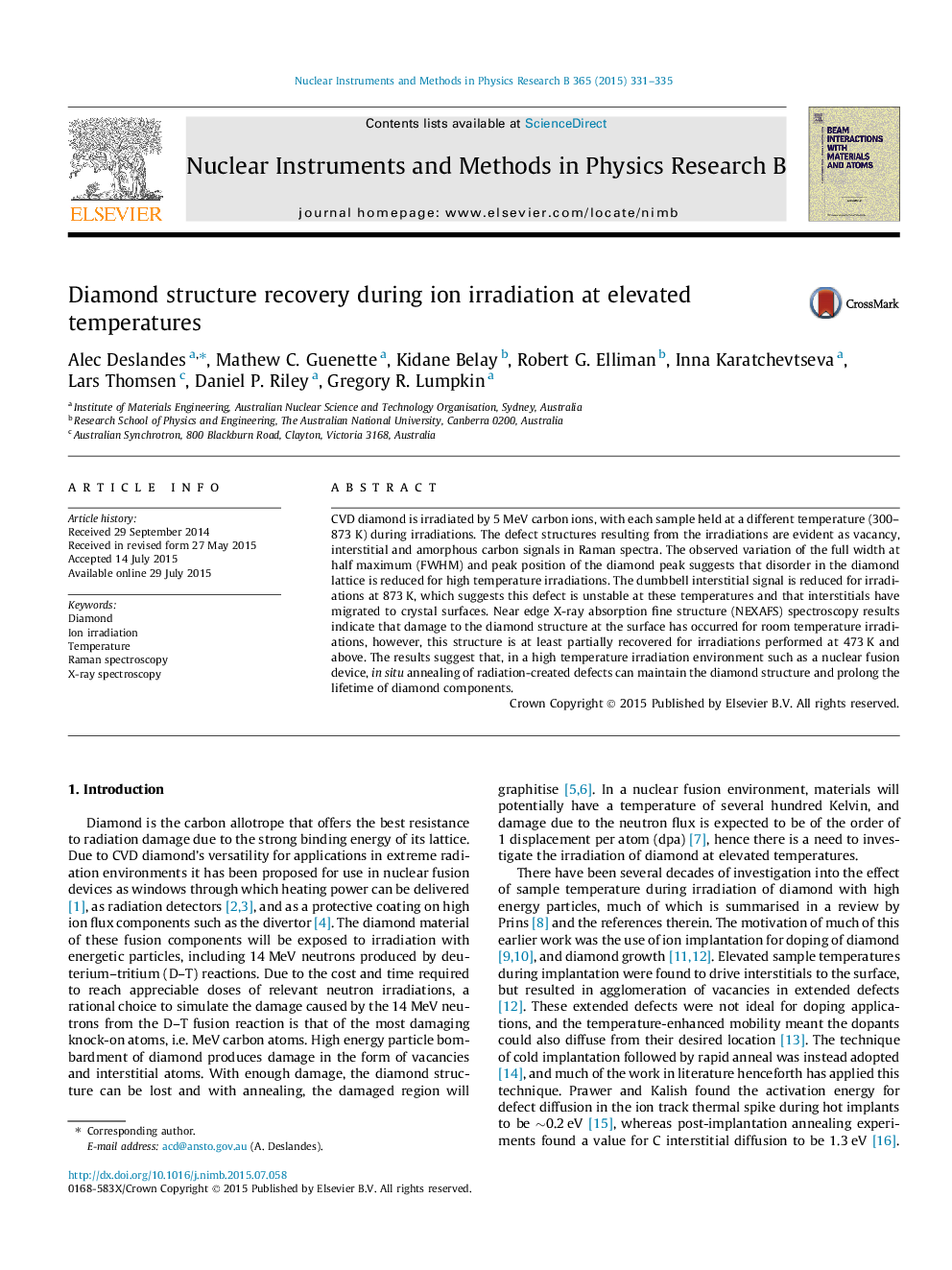| Article ID | Journal | Published Year | Pages | File Type |
|---|---|---|---|---|
| 1682441 | Nuclear Instruments and Methods in Physics Research Section B: Beam Interactions with Materials and Atoms | 2015 | 5 Pages |
CVD diamond is irradiated by 5 MeV carbon ions, with each sample held at a different temperature (300–873 K) during irradiations. The defect structures resulting from the irradiations are evident as vacancy, interstitial and amorphous carbon signals in Raman spectra. The observed variation of the full width at half maximum (FWHM) and peak position of the diamond peak suggests that disorder in the diamond lattice is reduced for high temperature irradiations. The dumbbell interstitial signal is reduced for irradiations at 873 K, which suggests this defect is unstable at these temperatures and that interstitials have migrated to crystal surfaces. Near edge X-ray absorption fine structure (NEXAFS) spectroscopy results indicate that damage to the diamond structure at the surface has occurred for room temperature irradiations, however, this structure is at least partially recovered for irradiations performed at 473 K and above. The results suggest that, in a high temperature irradiation environment such as a nuclear fusion device, in situ annealing of radiation-created defects can maintain the diamond structure and prolong the lifetime of diamond components.
